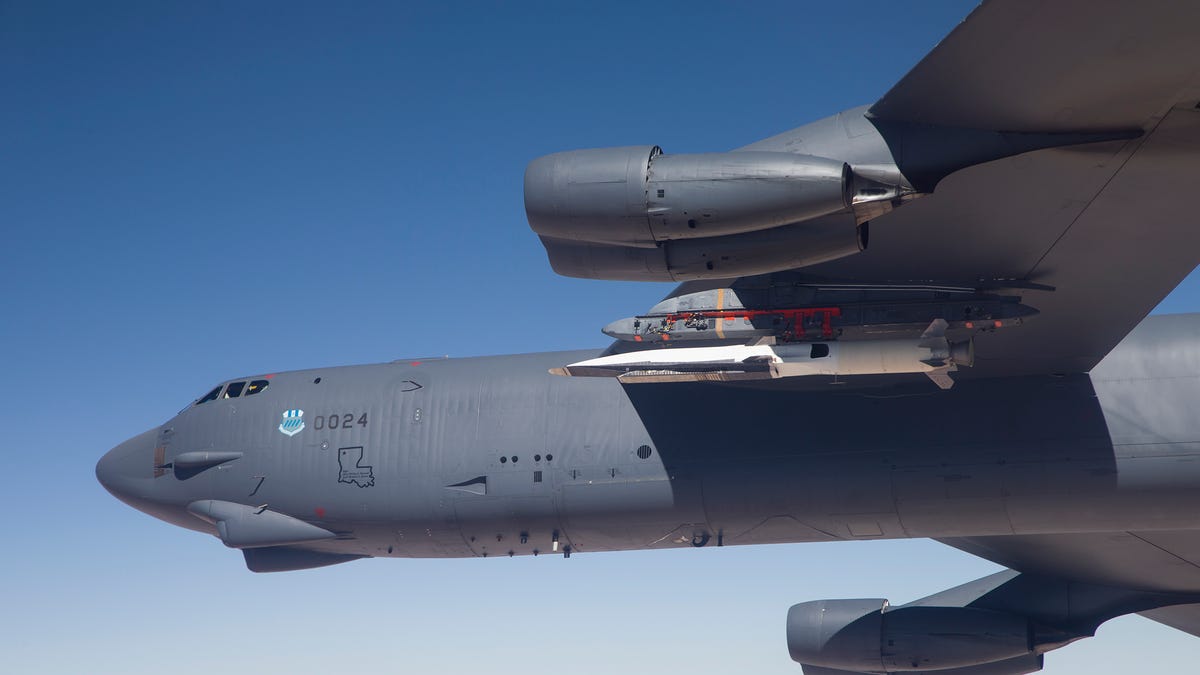X-51A Waverider hits Mach 5.1 in final flight
The accomplishment marks the longest flight for the $300 million X-51A technology demonstration program and, according to the Air Force and Boeing, the longest scramjet-powered hypersonic flight ever.

The final flight of the U.S. Air Force's X-51A Waverider program wasn't a long one, but it was long enough.
The Air Force cheerfully announced Friday that the scramjet-powered X-51A flew for more than six minutes earlier this week. Of that total flight time, partner Boeing said, three and a half minutes was done on scramjet power and the vehicle reached a top speed of Mach 5.1, which pushed it into the hypersonic range that researchers had been hoping for.
The accomplishment marked the longest flight for the $300 million X-51A technology demonstration program and, the Air Force and Boeing said, the longest scramjet-powered hypersonic flight ever.
"It was a full mission success," said Charlie Brink, X-51A program manager for the Air Force Research Laboratory, in a statement. "I believe all we have learned from the X-51A Waverider will serve as the bedrock for future hypersonics research and ultimately the practical application of hypersonic flight."
That's in sharp contrast to the gloom that followed the previous flight of an X-51A technology demonstrator. In August of last year, a faulty control fin caused an X-51A to abruptly lose control and prematurely put an end to a bid to reach Mach 6 speeds.
This week's flight was the fourth for an X-51A, and the Air Force has now exhausted its total inventory of four of the experimental airframes. The first flight occurred in May 2010, when the debut X-51A hit "approximately" Mach 5 and was scramjet-powered for just over two minutes.
What sort of practical application might lie ahead for hypersonic flight? Eventually, perhaps, developments with scramjet engines might make for cheaper rocket launches into orbit for a future generation of space planes, or missiles that get to their targets much faster than today's cruise missiles. A scramjet engine makes use of atmospheric oxygen, so it wouldn't need to carry oxidizers as do today's rockets, or could get by with less fuel.
The Waverider nickname for the X-51A comes from an essential element of scramjet flight -- once the airframe is moving fast enough, it essentially surfs its own shockwave.
To get to the vicinity of that speed, the X-51A first hitches a ride from the ground tucked under the wing of a B-52 mothership.
Wednesday's flight started at Edwards Air Force Base in southern California. The X-51A was released at approximately 50,000 feet and, powered by a solid rocket booster, accelerated to Mach 4.8 in about 26 seconds. It then separated from the booster, the scramjet engine was ignited, and the vehicle accelerated to Mach 5.1, or around 4,000 mph, at 60,000 feet.
By design, the X-51A, which carried a 240-second (4-minute) fuel supply, ended its flight by crashing into the Pacific Ocean. In total, the experiment delivered 370 seconds (6 minutes, 10 seconds) of telemetry data. That six-minute flight covered more than 230 nautical miles.
"The successes of the X-51A," the Air Force said, "will pay dividends to the High Speed Strike Weapon program currently in its early formation phase with [the Air Force Research Lab]."
Check out the video from Boeing below:

